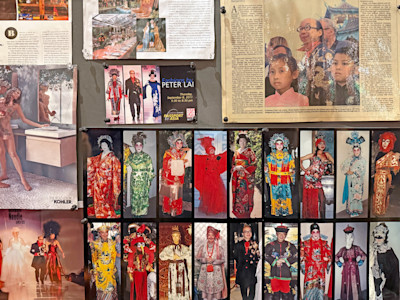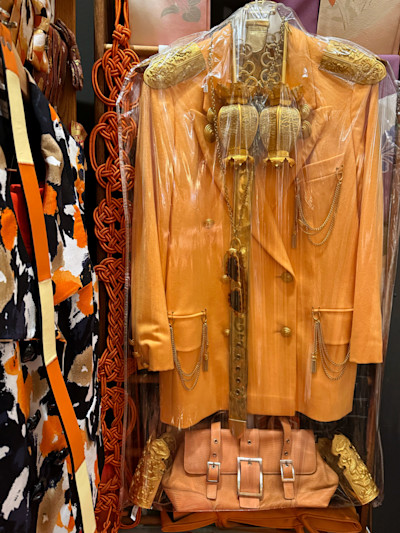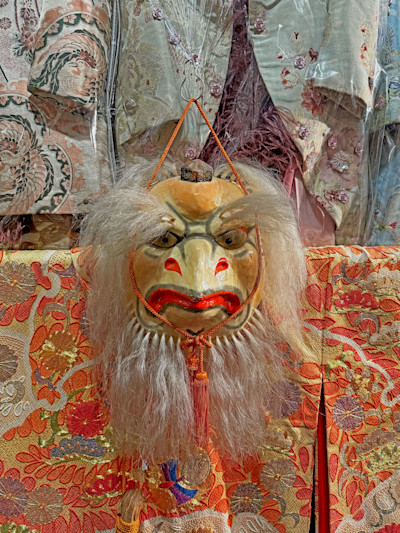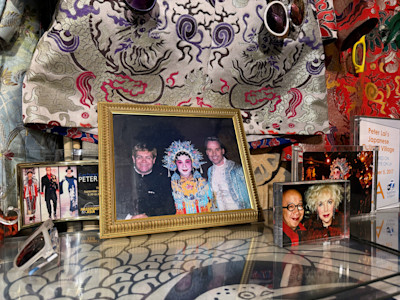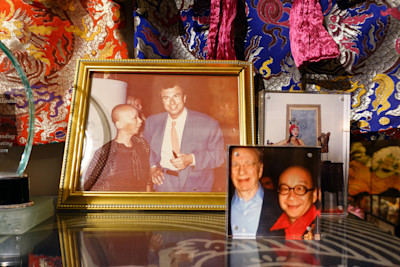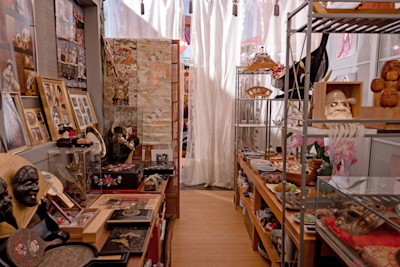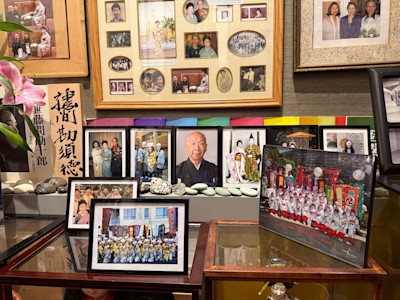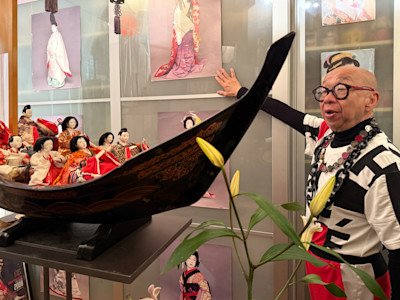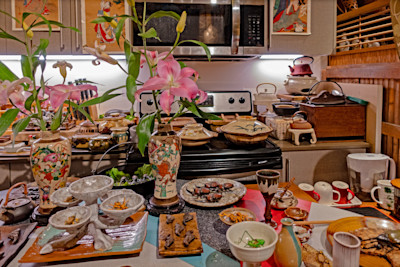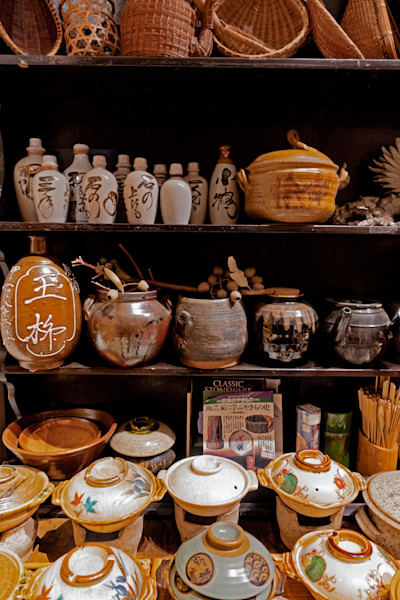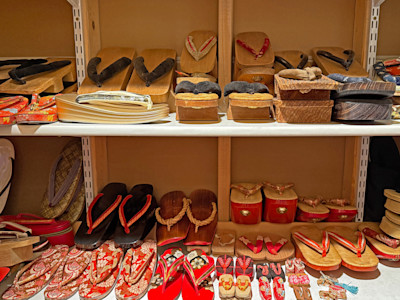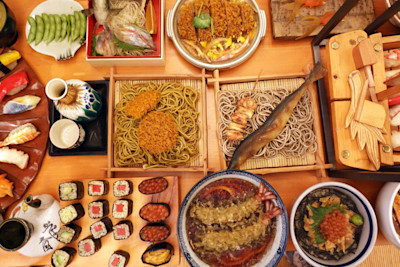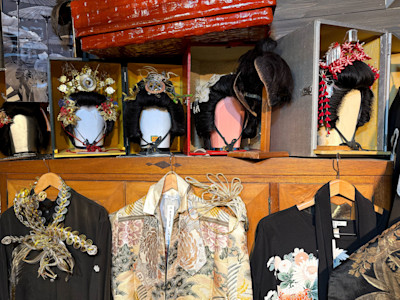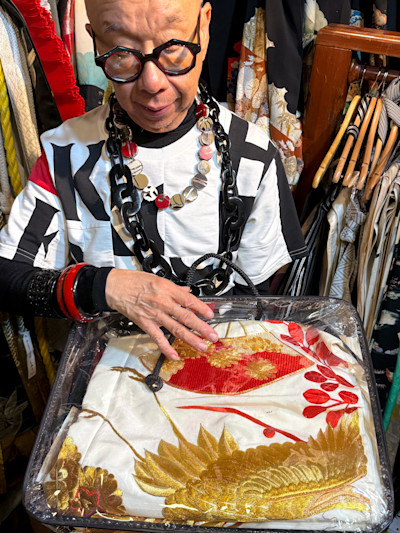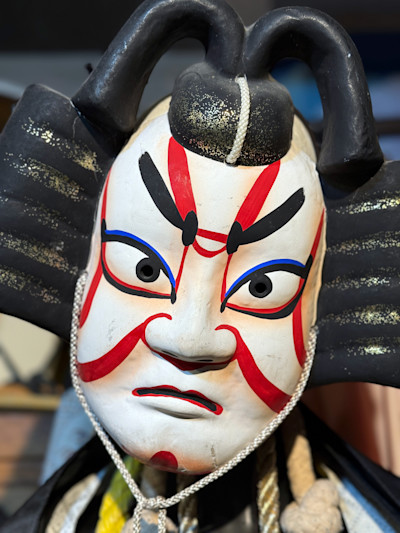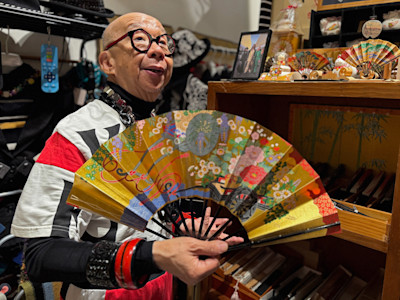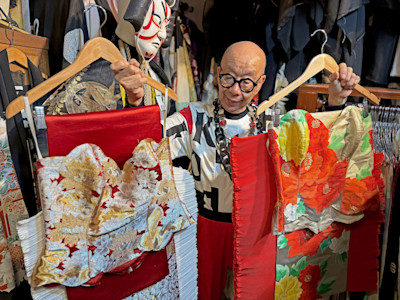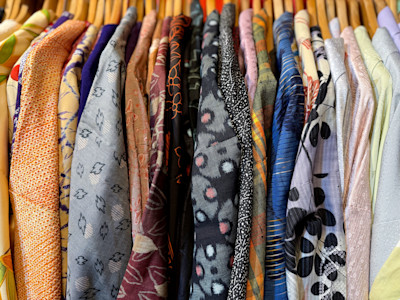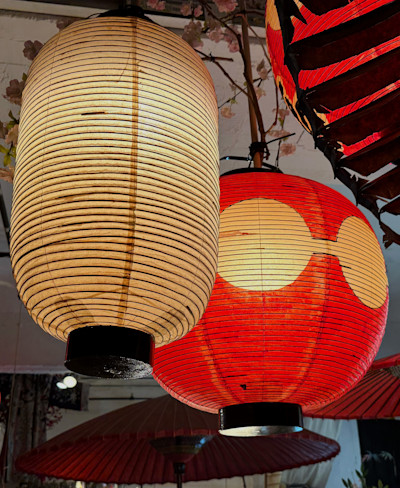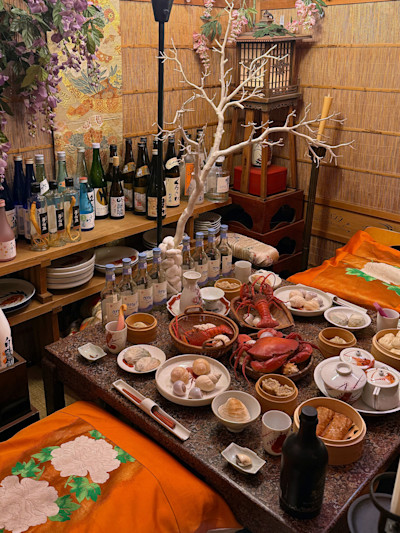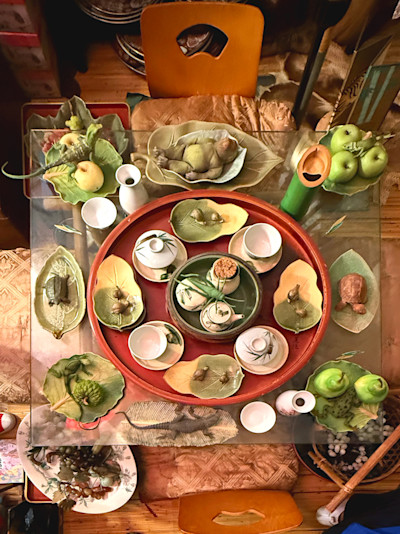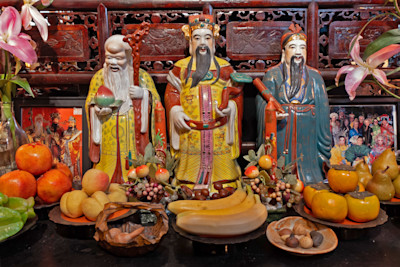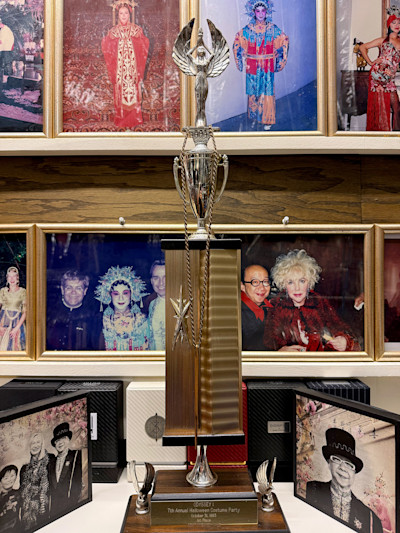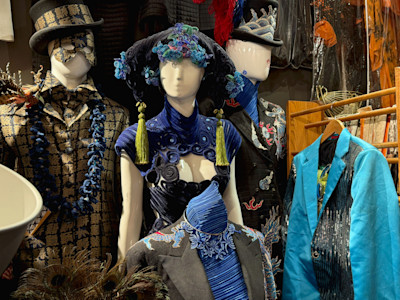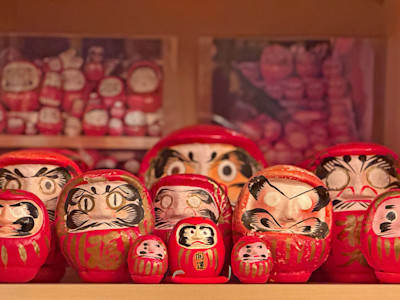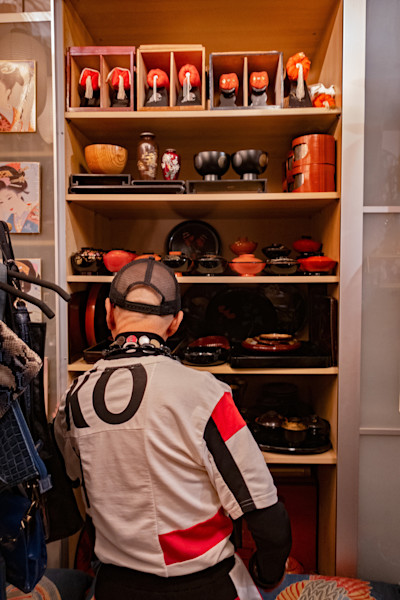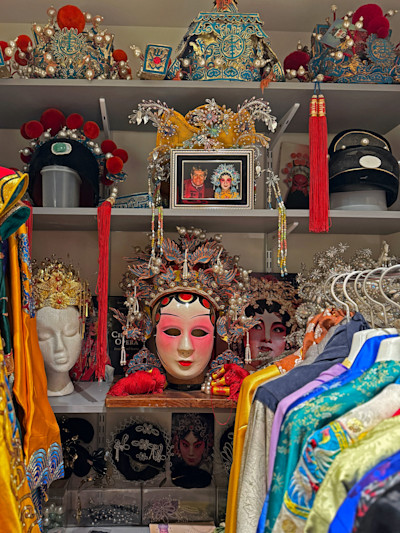At Home With: Peter Lai
Inside the eclectic world of fashion designer, collector, and dancer Peter Lai
07.5.2025
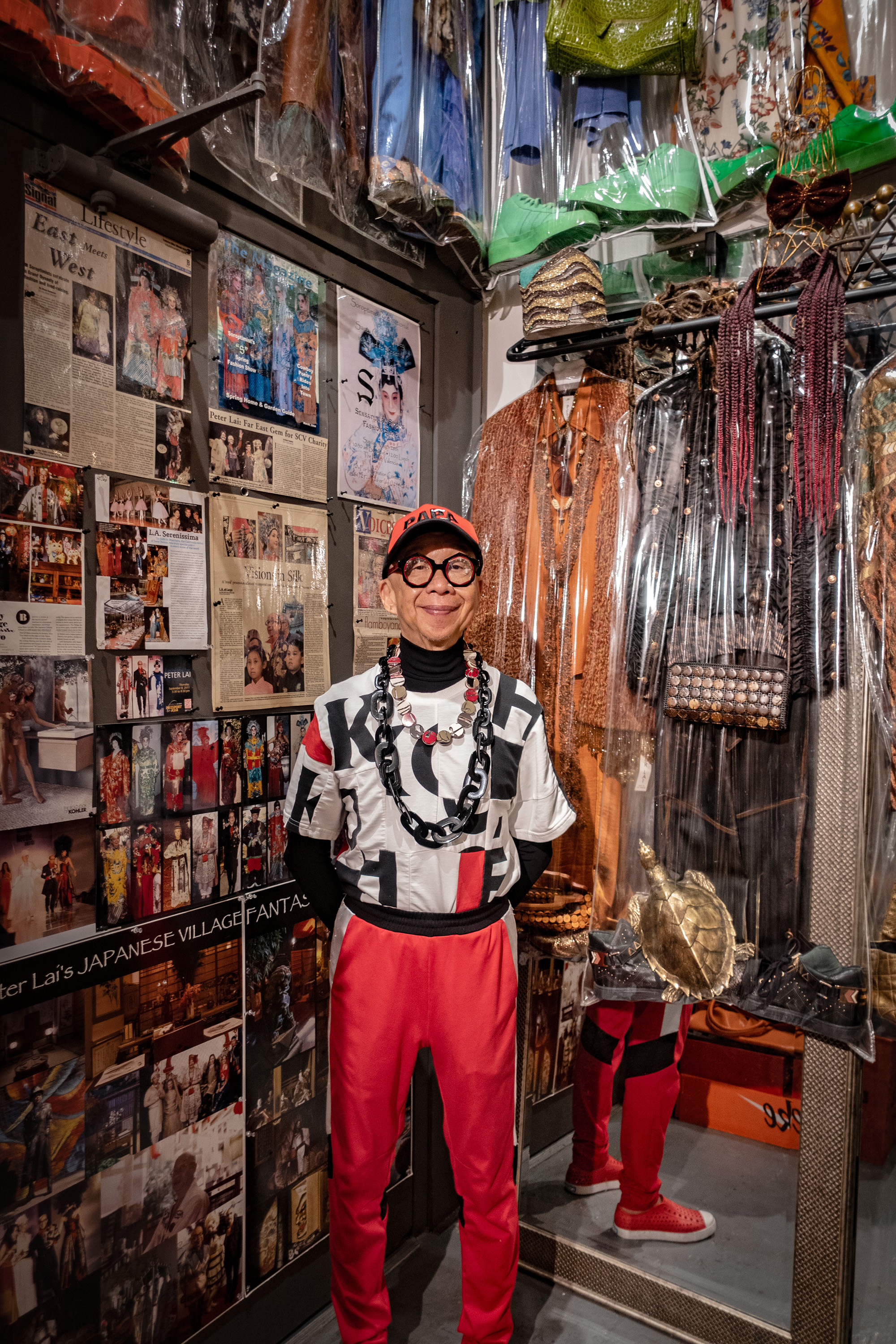
Peter Lai is a Los Angeles-based designer, collector, and cultural curator whose work bridges traditional Asian art forms with contemporary creative practices. Best known for his extravagant fashion designs and his immersive installation known as the Asian Village, Lai’s career reflects a deep commitment to preserving and reinterpreting East Asian material culture.
Born in Hong Kong in 1951, Lai was introduced to costume design at an early age. His family worked in the entertainment industry, producing garments for Cantonese opera, film, and television productions. From the age of 12, Lai was involved in helping create these elaborate pieces, which laid the foundation for his understanding of textiles, patterns, embellishment, and performance. His early exposure to theatrical aesthetics would remain a lasting influence throughout his illustrative career.
Peter’s interest in Japanese culture began in his teenage years and led him to explore the broader aesthetics of East Asia. In the 1970s, he immigrated to the United States, eventually establishing a name for himself as a designer with a distinctive style that blended Asian silhouettes, antique fabrics, and Western tailoring. His work was bold and expressive, featuring intricate embroidery, vintage brocades, repurposed vintage textiles, and found objects. Throughout the 1980s and 1990s, his designs gained popularity among celebrities including Whoopi Goldberg, Elton John, Tippi Hedren, and Marla Gibbs. Lai operated several boutiques in Southern California, including locations on Melrose Avenue and San Marino, where his garments were celebrated for their one-of-a-kind craftsmanship and visual impact.
In 2013, Lai retired from commercial fashion to focus on a more personal project—the creation of the Asian Village. Located in a loft in downtown Los Angeles’ Arts District, the Asian Village functioned as a living museum, studio, archive, and performance space. Originally called the Japanese Cultural Village, the name was later changed to reflect a broader range of Asian cultural influences. The space is filled with Lai’s extensive personal collection of antiques, costumes, props, decorative objects, and theatrical garments. These include kabuki wigs, Chinese opera robes, samurai armor, vintage kimonos, lacquerware, sampuru (Japanese food models), and personal documentation of friends and family, all carefully arranged into themed rooms and vignettes.
The Asian Village is not a static exhibition space—it’s an evolving environment where Lai continues to engage with his collection as a site for education, performance, and personal reflection. Visitors can book guided tours of the loft, which include insights into Lai’s collecting practices, the historical context of the objects, and his design process. The space includes rooms dedicated to kabuki theater, Chinese opera, Japanese tea ceremony, and vintage fashion, among others.
Since 2011, Lai has also been a dedicated student of kabuki dance. He earned his Natori certificate—a recognition of formal training and artistic achievement—in 2021. He continues to perform at cultural events around Los Angeles, including the Hollywood Bowl and the Nisei Week Festival in Little Tokyo. These performances, like the Asian Village itself, are extensions of his lifelong commitment to honoring and reinterpreting traditional Asian arts.
Walking through his village is to step inside his soul. This is his legacy. No longer just a designer, no longer just a collector, Peter Lai is an icon who knits past and present, tradition and flamboyance, into something sublime. From the studios of Hong Kong to the streets of L.A., from opera houses to obscure thrift bins, he distilled the essence of beauty: fearless, repurposed, inclusive. His Asian Village stands as testament to a life fully lived and truly designed.

